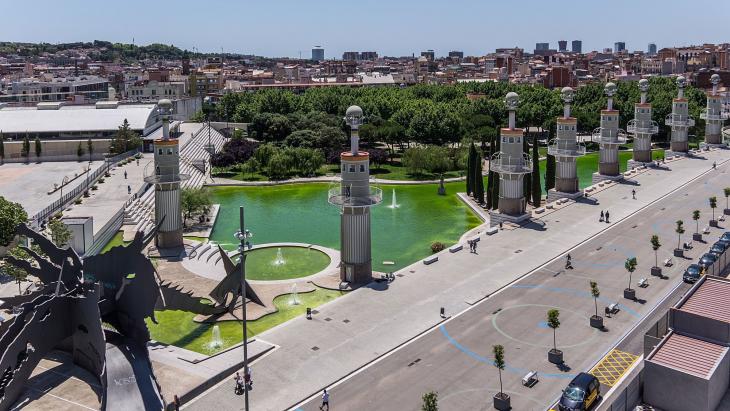Points of interest in the city
Parks with history

Barcelona’s green oases
Barcelona’s parks and gardens all have their own history and personality, qualities that make each unique. From the most popular to the least well-known, their origins, features, location and services make them important meeting and leisure points in each of the city’s ten districts. Discovering them, learning about them and enjoying them is open to all, and they are well worth a visit!
The city with no parks
There was a time when there were no parks in Barcelona. Gardens were private and belonged to rich families and science academies. Land without buildings were rural properties, used to grow crops. The first park established expressly as a place of public leisure did not open until 1872, when the Ciutadella was inaugurated. Since then, though, dozens of parks and gardens have been created in Barcelona, turning the Catalan capital into a green, healthy city where many built-up areas have been replaced by green spaces.
Barcelona’s parks can be classified into four groups: forest parks, which include wooded areas; themed parks, which focus on specific activities; historic parks linked to past events or unusual origins; and urban parks, the most heterogeneous of all. All together, a superb network of facilities where visitors can play, practice sport, rest, take some time out with the family, enjoy nature and even go swimming!
Forest, themed and historic parks
The city’s two forest parks are situated on the slopes of Montjuïc and in the Collserola hills, respectively. Each is rich in lush gardens and, protected by this natural shield, the city of Barcelona has two large “lungs” that pump oxygen into the metropolitan area and provide large areas for leisure activities amidst thick Mediterranean woods.
The city’s themed parks focus on specific types of vegetation or activities. Examples include the following: the Mossèn Cinto Verdaguer Gardens, devoted to bulbous and aquatic plants; those of Joan Maragall, with its magnificent sculpture collection; and those of Mossèn Costa i Llobera, devoted exclusively to cacti and succulent plants. Another outstanding site is the Botanical Garden, where visitors can learn about different plant communities typical of the Mediterranean climate.
Turning now to the city’s historic parks, some have their origins in private commissions, whilst others –such as the University Gardens– are the legacy of scientific institutions and yet others were established in connection to major events, such as the world’s fairs of 1888 and 1929. In the case of Barcelona’s most beloved park, the Ciutadella, the site was redesigned as part of enthusiastic preparations for the city’s first Universal Exposition.
The gardens of the Catalan “jet-set”, and urban parks’
As occurs with most other cities, many of Barcelona’s gardens originally surrounded the houses of wealthy families. Examples include the Laberint d’Horta Park, which once formed part of a noble estate, and the Palau de Pedralbes Garden, landscaped for official receptions in honour of King Alphonse XIII. Another outstanding site is Park Güell, which the industrialist Eusebi Güell commissioned Antoni Gaudí to design.
Finally, the city’s urban parks, scattered around all ten districts, form the most heterogeneous group. They range from modern sites, such as Centre del Poblenou, to practically unknown parks, such as Monterols in the Sant Gervasi neighbourhood.


